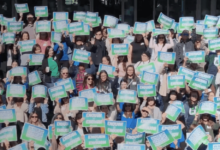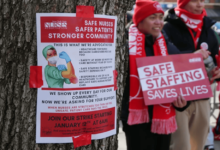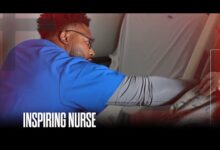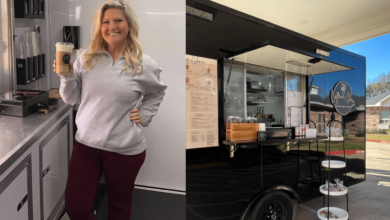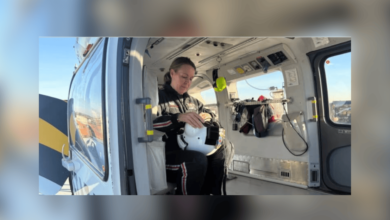Representation, pay and overseas work were hot topics 100 years ago

After last year’s focus on 1948 and the months following the NHS’s creation, in 2024 we will look back to 100 years ago to discover what was being covered by Nursing Times in 1924.
At the start of January 1924, five years had passed since the end of the First World War, George V was on the throne and the Conservatives were in power under prime minister Stanley Baldwin. However, change was afoot. Ramsay MacDonald became the country’s first Labour prime minster on 22 January.
In the world of media, the Met Office issued its first shipping forecast on 1 January and the world’s first radio play, A Comedy of Danger by Richard Hughes, was broadcast by the BBC on 15 January.
Meanwhile, in her new year message in the 5 January issue of Nursing Times, founding editor Swanhilde Bulan said she hoped that the nursing profession would “advance steadily” during 1924. She also hoped for “wise and careful ruling by the General Nursing Council” and “thoughtful discussion” by nursing representative bodies to bring about improvements in conditions and pay. “We would urge nurses, however busy they are, to think over questions and express their opinions,” she added. These new-year ambitions would probably not be out of place a century later for Nursing Times in 2024.
One of the organisations in question, the General Nursing Council for England and Wales (GNC), was the first forerunner of today’s Nursing and Midwifery Council. Having been established in 1919 following a long campaign by matron Ethel Gordon Fenwick and others, there were around 33,000 nurses on its register at the start of 1924. However, Ms Gordon Fenwick had lost her seat on the council in a vote in 1922, after a period of infighting and personal animosity among the groups vying for ascendency at the fledgling regulator.
Ms Bulan was not on good terms with Ms Gordon Fenwick and used her leader article to set out recommendations for the chair of the GNC and various committees, ahead of its first meeting of the year. She felt it “almost certain” that grandly titled Sir Wilmot Herringham, a doctor and academic, would continue as chair. Sir Wilmot – one of the first doctors to investigate the effect and treatment of poison gas during the First World War – did, in fact, serve as GNC chair from 1922 until 1926.
“Miss Lloyd still is, undoubtedly, the wisest choice for the chair of the education and examination committee,” Ms Bulan continued, in reference to matron Alice Lloyd Still. Ms Lloyd Still was another leader of the campaign for the state registration of nurses and hers was the second name, behind Ms Gordon Fenwick’s, on the GNC register when it was opened in 1921. Florence Nightingale had presented her with gifts on her appointment as a sister and, through her GNC role, Ms Lloyd Still helped establish the first national examination standards for the registration of nurses.
Other headlines in January 1924 covered a large financial endowment for the London Hospital, accommodation for nurses in Brighton and the fact that 12 sisters were sailing to India to volunteer. Again, with echoes of current overseas recruitment efforts, another report stated that “pioneer nurses of the best type” were being sought to go and work in the Australian bush. A salary of £175 – equivalent to around £12,500-£13,000 in today’s money – was offered, along with board and lodging. “The nurses will be required to engage both in maternity and sick nursing work and there will be facilities for cooperation with medical men,” it noted.
In softer news, Nursing Times wrote about a VIP visit in Yorkshire the preceding month, which might bring some belated festive cheer to today’s community workforce. According to the report: “The Lord Mayor of Sheffield and the Lady Mayoress, Father Christmas and his fairies, accompanied by a retinue of attendants, called at the Queen’s Nurses’ Home in Glossop Road on Christmas morning to wish the superintendent and the nurses a happy Christmas. The Lord Mayor said he was making a tour of the hospitals, and he wished also to include the district nurses and offer them his hearty good wishes.”
Elsewhere, the advertising section recommended Vapo-Cresolene for sporadic cough. The product in question was a dark, pungent liquid made from coal tar that was heated so it could be inhaled. Meanwhile, the Abel Morrall MD safety pin was advertised as the “safety pin that is safe” and a “boon to busy nurses”, being “ideal for securing surgical bandages quicky and firmly”.
Nursing Times Archive
With Nursing Times’ online archive of its print issues, subscribers can dip into the history of nursing at the touch of a button and discover how it has changed over the decades. Each issue’s stories, features and even advertisements give a fascinating insight into the profession and much more. Representing over 100 years of nursing history, the Nursing Times Archive starts with the very first issue of the magazine, which was published on 6 May 1905. This great resource can be accessed directly from our website.
To start exploring, visit: nursingtimes.net/digital-archive
